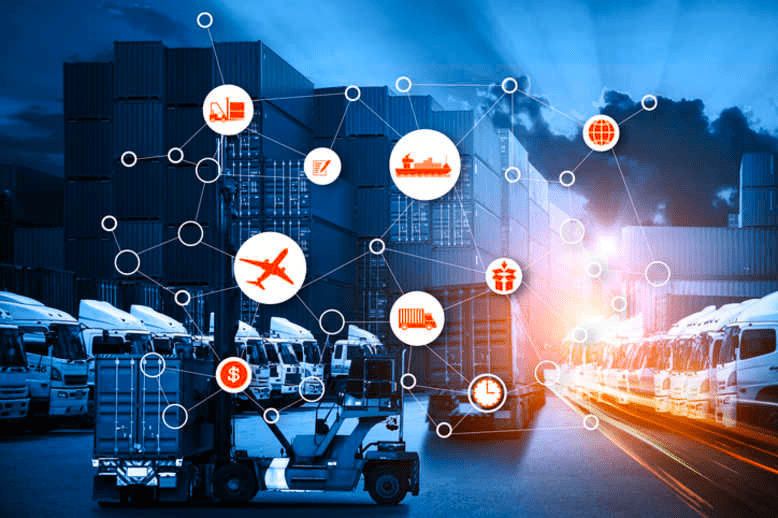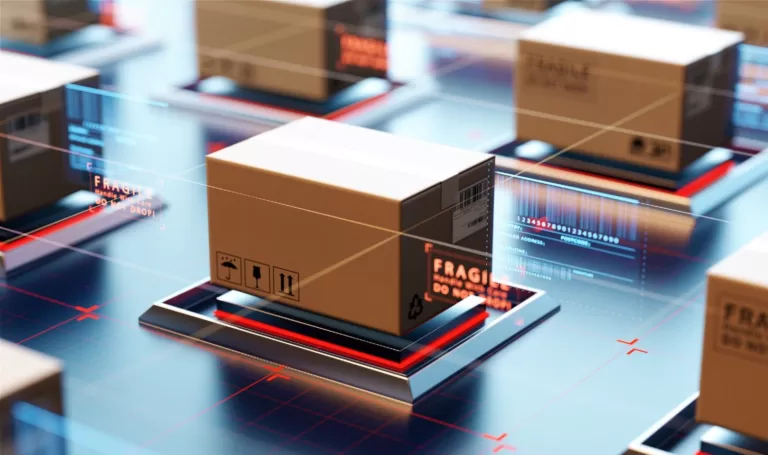E-Commerce, Last Mile Delivery Optimization
The future of hyperlocal delivery
Oct 25, 2018
9 mins read

Hyperlocal delivery model has emerged as a trend in recent years. Inspired by large rounds of investment in Uber Eats in the U.S. and Big Basket in India, aspiring entrepreneurs entered this niche hoping to find success. However, it turned out that it was not as simple as it seemed.
First, the concept of hyperlocal delivery services has been around for a while. Door to door delivery has been available since the beginning of the 20th century. It started with mail delivery and then expanded to groceries and other consumer goods.
The pioneers in the hyperlocal delivery market only added a new layer to old, established methods. The opportunity to have food delivered to your home by using a smartphone app or paying for a monthly subscription, instead of calling your local grocery store, is definitely an innovation. However, this is not sufficient for it to expand worldwide.
What is a hyperlocal delivery model and how does it work?
Hyperlocal delivery may look simple at first glance. It was thought that all that was needed was to hire couriers and to develop a mobile app. It, therefore, became tempting to start hyperlocal delivery startups, with the hope that it brings short-term profits. This seems to have been the attitude in recent years. However, while it seemed simple at first, that is not really true. In order to make sustainable hyperlocal delivery startups need to be more creative, proposing new unconventional solutions, such as real-time order clubbing.
Some people became even sceptical about the possibility of building successful hyperlocal delivery services. They claimed that it wasn’t possible to build a sustainable hyperlocal delivery system, due to the small profit margins and high overhead, such as for transportation costs. However, others saw the potential opportunity.
It is true that hyperlocal delivery is a complex logistical task, which requires meticulous route planning and readiness to change routes on command. However, it doesn’t mean that these obstacles cannot be overcome. It only means that the tools for solving these problems are not effective.
The industry needs new methods that are flexible and adaptable to each particular situation. Artificial Intelligence comes here to help. For example, Locus uses AI-based algorithms in supply chain decision making that utilize historical data for making future projections, such as identifying optimal time windows for delivery which leads to increase in a delivery rate.
Hyperlocal On-demand Delivery Model Recent trends
While on-demand hyperlocal delivery is primarily associated with food delivery services, this is only a small fraction of the potential market. Consumers are becoming more demanding in their service requirements. Since Amazon is now offering two-hour delivery to your front door, customers are now expecting the same level of service from other companies as well. In addition to grocery store last mile delivery, there is also expected to be hyperlocal delivery for other goods including consumer electronics, apparel and medical supplements.
What is happening in eCommerce?
That is now what is happening in eCommerce. Competition for customers has shifted from online to offline. While most eCommerce players have been successful with methods of conversion optimization and online customer acquisition, there is still considerable room for the improvement of the delivery experience. This is especially true in the developing world, where there is a limited number of third-party providers, who can offer a fast delivery service. The options are to either work with a local audience by building own express delivery service or partner with a delivery provider. There is a definite need for service providers who will enhance the delivery capabilities for eCommerce businesses.
It also important to note that quality of service is highly dependent on the type of goods. For online groceries delivery, it’s important to maintain the freshness of the products, apparel goods must be protected from being jammed and consumer electronics, especially fragile goods, must avoid collisions.
Influence of local conditions
The popularity of Facebook, which has spread across the world in a few years, may create an illusion that every startup can expand into global markets with the same ease. This may be true for companies that rely solely on the Internet like SaaS.

If a company depends on the physical infrastructure, it becomes much more complicated. This is the situation that exists with hyperlocal delivery. Success with hyperlocal delivery in the U.S.A. doesn’t mean that the same approach can be replicated in other parts of the world. In these countries, there is a more diverse environment, home addresses can be written ambiguously, and consumers may speak different languages and write the delivery address in their native language.
Locus Logistics solved this challenging task, by implementing a combination of machine learning, natural language processing techniques and heuristic based methods. This helped to build patterns in address writing, which significantly reduced errors in address recognition.
Hyperlocal Delivery Solutions
Hyperlocal delivery services requires new approaches to logistics optimization. Time-tested logistic methods that worked for many decades are now ineffective. They can’t be adapted to the new environment with its short delivery cycles and complex route planning. New methods are required to solve this problem. Since optimization of hyperlocal delivery is a multidimensional problem, there are different ways to optimize it.
Widely discussed ideas about solving last-mile delivery problems by replacing humans with robots have recently become popular. The proponents of this approach claim that robots can reduce expenses on the last mile delivery since it is cheaper to maintain robots over the long-term than to pay salaries to couriers dispatching.
While this may be true in areas with a highly developed road infrastructure and a low crime rate, it is obviously not a universal solution. There are many parts of the world, where a courier on a bike will do the same job much quicker and safer than a sophisticated automated machine.

Another way to minimize the cost of hyperlocal delivery and to increase profit margins is optimization in a dynamic route planning. This approach seems to be more promising due to its universality. Machine learning may be the key to provide solutions for route optimization. It has already proven its efficiency in supply chain optimization and food delivery.
In order to minimize costs, effective hyperlocal delivery requires the collaboration of several services. For example, it may consist of a logistics company which provides a transportation fleet, an intermediary who connects stores with a delivery service and a third-party provider for route planning and delivery chain optimization.
3PL services backed by cutting-edge machine learning technologies can offer logistics services for companies who can’t support their own logistics infrastructure. By implementing machine learning techniques that can minimize delivery expenses, optimizing routes and predicting the optimal time for delivery, it is possible to minimize investments in the delivery infrastructure and make it profitable, even for small businesses.
Hyper Local Delivery Future Trends
As we can see, hyperlocal delivery is a complicated task. The first hyperlocal delivery trends is the speed of delivery. Since consumers demand faster delivery, maintaining prompt delivery without a loss in quality will be an important challenge in the near future. Drones for local delivery is a possible solution which has a chance to disrupt the hyperlocal delivery industry. Compared to delivery robots, drones are not influenced by the quality of the road surface and capable of delivering goods in shorter time frames
The complexity of the delivery process has resulted in another emerging trend – specialization. While some companies are focused on providing delivery fleet and warehouses for goods storage, others like Locus, have provided software solutions for decision-making in logistics.
Amazon has demonstrated that customers demand shorter delivery times. It is possible that with the automation of the delivery process, businesses will be able to implement instant delivery. Imagine a situation where a customer places an order. Machines in a warehouse start preparing an order immediately and a drone is then ready to take it to your house. However, it might be something even more extraordinary that takes place in the future.
Predictive logistics is an approach that attempts to predict the necessary requirements in a supply chain and satisfy them before they occur. While it is now discussed more with the industries with a large volume of items transferred, it may become feasible for small hyperlocal deliveries in the near future. Locus has developed a system that predicts the best time for delivery for eCommerce. This results in a shorter delivery time and more customer satisfaction.
Developments in deep learning and the collection of large amounts of data about customer demands may be sufficient to build a predictive system that will deliver orders before the need for them has even occurred. This predictive delivery may be especially beneficial for goods with cyclical consumption, such as food or detergent. The development of the Internet of Things infrastructure makes predictive delivery even simpler. For example, smart sensors in a bottle of detergent may send a signal to the supplier that it will be empty soon and automatically initiate a new order.
While on-demand hyperlocal delivery has become the norm in countries like the U.S., the most interesting breakthrough may come from the developing world. Hyperlocal delivery has faced many more challenges in Asia and Africa, compared to the Western world. It includes obstacles such as a lack of infrastructure, a multilingual environment, challenging weather conditions and government regulations. Nevertheless, these challenges have motivated startups to develop stronger products, which have the potential to disrupt global markets.


This post was authored by: Dmitry Khramtsov
Related Tags:

Fleet Optimization
What Are Consumer Companies Doing In Canada To Optimise Logistics And Why?
Logistics Optimization in Canada: Recently, 78 Canadian companies, 26 business associations and 12 Canadian academic institutions came together to form SCALE.AI, and the Government of Canada announced it had selected SCALE. AI as one of five winning industry-led proposals in its Innovation Super clusters Initiative. SCALE stands for Supply Chain and Logistics Excellence, and it’s an AI-powered […]
Read more
Last Mile Delivery Optimization
The Bangalore Supply Chain Meetup: First chapter in India
As a logistics professional and a keen learner, I often attend various supply chain conferences to acquire knowledge and discuss new ideas. However, more often than not, these conferences tend to be generic, monotonous events where the captive audience simply goes through the actual session in the hope of networking with fellow professionals afterwards. I […]
Read moreMOST POPULAR
EDITOR’S PICKS
SUBSCRIBE TO OUR NEWSLETTER
Stay up to date with the latest marketing, sales, and service tips and news


The future of hyperlocal delivery